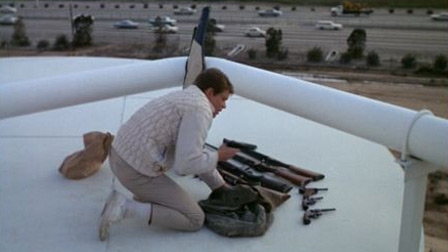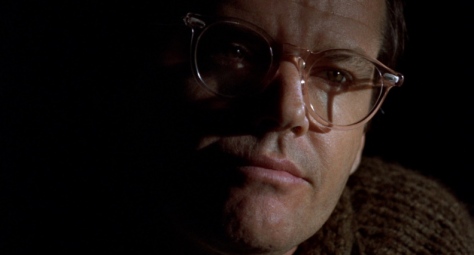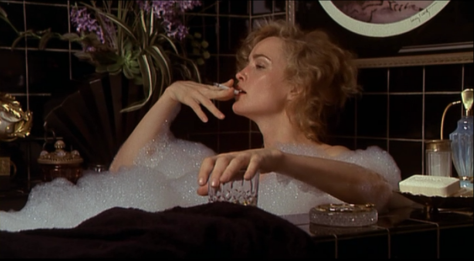By Dennis Hartley
(Originally posted on Digby’s Hullabaloo on July 23, 2011)

In the mid-90s, I worked at a Honeybaked Ham store in the Seattle area (don’t ask). Normally, I wouldn’t bring that up, but…funny story. Well, not “ha-ha” funny, but it does tie in with this week’s review.
Because you see, that was when I had my personal brush with “eco-terrorism”. I came to work one day, and espied a couple of Redmond’s finest standing outside the store, talking to the manager. Then I noticed interesting new artwork adorning the windows, writ large in dried ketchup and barbecue sauce: MEAT IS MURDER! It was signed “E.L.F.”. Apparently, several other restaurants down the street had also been hit (McDonald’s had had their locks glued shut).
So, as I was scrubbing to remove the graffiti, I wondered “Who is this ‘ELF’ …a disgruntled Keebler employee?” I had never heard of the Earth Liberation Front. I remember the manager saying “How much you want to bet this guy fled the scene in leather Nikes?” “Yeah,” I snickered, whilst contemplating the dried globs of Heinz 57 on my sponge “these suburban anarchists aren’t exactly the Baader-Meinhof Gang, are they?” (I can’t say that I felt “terrorized”).
Flash forward to 2001. I turned on the local news one night, and saw the UW Center for Urban Horticulture engulfed in flames ($7 million in damage). The arson was attributed to the E.L.F. “Hmm,” I pondered, “maybe they are sort of like the Baader-Meinhof Gang, ”
Or are they? According to the FBI, “Eco-terrorism” is defined as:
The use (or threatened use) of violence of a criminal nature against people or property by an environmentally oriented, sub-national group for environmental-political reasons, or aimed at an audience beyond the target, often of a symbolic nature.
That certainly covers a lot of ground. One could argue that Johnny Appleseed was an Eco-terrorist. Sure, he’s a legendary conservationist and agrarian icon. However, he was against grafting, which resulted in a fruit more suitable for hard cider than for eating. Hence, the “environmentally-oriented” Appleseed was “responsible” for introducing alcohol to the frontier. And it’s inarguable that much “violence of a criminal nature against people or property” is committed under the influence. OK, that’s a stretch .
Then again, there are a number of “environmentally-oriented” types doing a “a stretch” in the federal pen right now for non-lethal actions that the government considers terrorism, and that others consider heroic. This is not a black and white issue; a point not lost on the directors of If a Tree Falls: A Story of the Earth Liberation Front.
So what type of circumstance can change a nature lover into a freedom fighter? Anyone can make a statement by holding up a sign or throwing on a “Save the Rainforest” t-shirt, but what motivates someone who decides to take it to the next level-throwing on a Ninja outfit and torching a lumber mill in the middle of the night? And what would they hope to achieve? Wouldn’t that just encourage corporations to cut down even more trees to replace lost inventory?
In order to convey a sense of the humanity behind the mug shots, co-directors Marshall Curry and Sam Cullman focus primarily on Earth Liberation Front member Daniel McGowan, who at the time of filming was facing a possible life sentence for his direct involvement in several high-profile “actions” (including the arson of an Oregon lumber mill) that resulted in millions of dollars in property damage. Holed up in his sister’s NYC apartment (and sporting a house arrest anklet for the first third of the film), McGowan candidly opens up about his life and what led him to change his own M.O. for making a statement from “environmental activism” to “domestic terrorism”.
The filmmakers parallel the timeline and details of McGowan’s personal journey with a study about the development of the E.L.F., adding present day interviews with his cohorts and archival footage of some of the group’s early “actions” (which were more in the realm of civil disobedience and passive resistance-like sitting in the path of bulldozers and camping out in old-growth trees marked for cutting). McGowan initially became involved with the environmental movement through “mainstream” activities, like “writing hundreds of letters” of protest and participating in peaceful demonstrations.
McGowan became frustrated with what he perceived to be the ineffectiveness of such actions. He sums it up with a rhetorical question: “When you’re screaming at the top of your lungs, and nobody hears you, what are you supposed to do?”
The tipping point for McGowan came in 1999, when he participated in the WTO protests in Seattle. There, through some of the more radicalized E.L.F. members, he became embedded with the relatively small band of black-clad “anarchists” who were disproportionately responsible for most of the property damage that occurred during the demonstrations (the majority of participants made a point after the fact to disassociate themselves from the anarchists).
From there, it was a relatively small jump to the more extreme acts that would lead to his eventual arrest and prosecution (he agreed to a “non-cooperation” plea deal that saved him from life in prison but still saddled him with 7 years and a “terrorism enhancement”).
The filmmakers give equal screen time to some of the law enforcement officials and prosecutors who made the case against McGowan and his associates. Although no one was ever injured or killed as a result of E.L.F. activity (astounding considering that there were approximately 1,200 “actions” perpetrated by the group during their heyday), there are still victims; and some of them appear on camera as well to offer their perspective.
Were these people “terrorists”? You almost have to get back to defining “what is a terrorist?” Or in this case, who are the real terrorists? One interviewee offers this: “95% of the native American forests have been cut down. Trying to save the remaining 5% is ‘radical’?” That’s a valid question. McGowan himself seems to be arguing (in so many words) that in a post 9-11 world, people have a tendency to make a “rush to judgment” without considering the alternate point of view (he suggests that the word “terrorist” has supplanted “Communist” as the demagogue’s dog whistle of choice).
I wonder if the filmmakers intend McGowan’s story to be a litmus test for the viewer (how far out on the limb would you be willing to go for your personal convictions?) If so, that’s a tough one. Part of me identifies with Daniel McGowan the environmentally-conscious idealist; but I don’t think I can quite get behind Daniel McGowan the criminal arsonist. For now, I’m just content to keep recycling and doing my part to think “glocal”. And in case you’re wondering…I haven’t stepped foot inside a Honeybaked Ham store since I quit working there 14 years ago. Those murderous bastards.




























